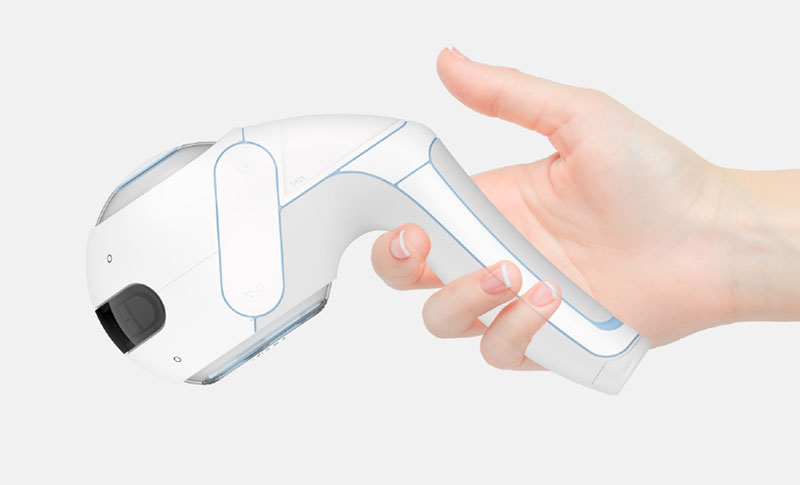
Guide dogs help blind people by leading them to their desired destination. However, only a small proportion of blind people use a guide dog to get around, and for others, it is not even an option due to prohibiting lifestyle reasons – such as allergies, expenses or house size.
Anthony Camu, a final year Industrial Design and Technology student at Loughborough University in England, designed a digital guide dog for visually impaired people that fall into the latter category.
Read more Wearable Device Uses Ultrasound to Detect Obstacles for Blind People
Inspired by virtual reality gaming consoles, he has conceptualized and started to prototype ‘Theia’, a portable and concealable handheld device that guides users through outdoor environments and large indoor spaces with very little user input, reports Loughborough University.
Using Theia
Anthony says much like a self-driving car, Theia – which is aptly named after the titan goddess of sight – will program routes to reach destinations and avoids accidents along the way.
To use Theia, a user would simply say: “Hey Theia, take me to (for example) Cabot Circus”.
As an internet of things (IOT) device, Theia will then process real-time data available online, such as traffic density (pedestrians and cars) and weather, to guide users accurately and safely to their destinations.
While guiding a user from A to B, Anthony envisages it will also assist with tackling specific interactions such as elevators, stairs, entrances, shops, and pedestrian crossings, to name a few.

Theia will also have a fail-safe procedure for high-risk scenarios, such as crossing busy intersections.
When a user is close to a crossing, Theia will push them back and enter ‘manual mode’, which is a bit like using a cane.
The technology
Anthony aims to combine Lidar [a remote sensing method that uses light] and cameras so Theia can capture a three-dimensional image of the users’ surroundings.
Powerful onboard processors will then determine the best path to take and separate routes into individual commands – for example, bear left at 1.4 m/s.
The problem from here is communicating this information to the visually impaired person, and Theia aims to tackle this by physically ‘leading’ users.
Theia will communicate complex walking maneuvers and actually move users’ hands in open space using a novel form of force feedback that involves a control moment gyroscope (CMG) – tech found in satellites and space vehicles, including the international space station.
Read more These New Generation of Wearables are Empowering Blind and the Visually Impaired
Following user testing, a unique system of force and resistance was found, which can communicate complex walking maneuvers in real-time.
“Theia has the capacity to expand a blind person’s comfort zones and possibilities, broaden their horizons and allow them to think less about walking and more about what’s waiting for them at the end of the route,” said Anthony.











